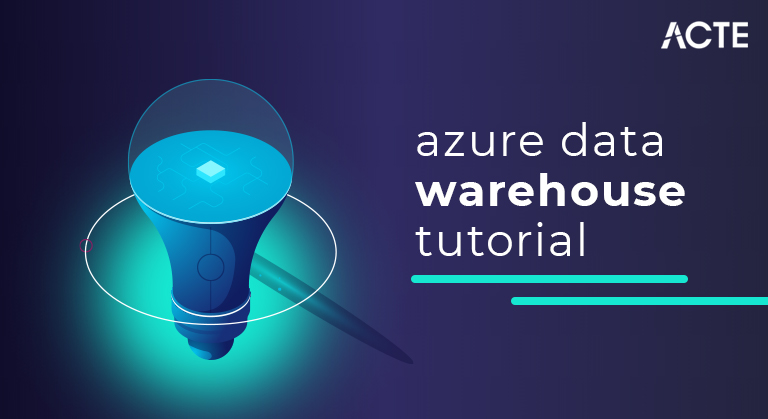
- Introduction to Azure data warehouse
- About to Azure data warehouse
- Design of to Azure data warehouse
- Use Cases
- Stacking information
- Prologue to Azure SQL Data Warehouse
- Cooperative appropriation
- Information stockroom models
- Different advantages include
- Challenges
- Information warehousing in Azure
- Key choice measures
- Conclusion
- Azure SQL Data Warehouse is a cloud based information stockroom that empowers in making and conveying an information distribution center. Azure Data Warehouse is fit for handling enormous volumes of social and non-social information. It gives SQL information stockroom abilities on top of a distributed computing stage.
- Azure SQL Data Warehouse is a cloud based information stockroom that empowers in making and conveying an information distribution center. Azure Data Warehouse is fit for handling huge volumes of social and non-social information. It gives SQL information stockroom abilities on top of a distributed computing stage. It has local help for SQL server and can without much of a stretch move on premises SQL servers to SQL Data Warehouse also utilize comparable inquiries and develops. Supporters can in a flash scale, respite and psychologist their information stockroom assets.
- Making a cloud based information stockroom.
- Moving existing (on premises) information stockroom to the cloud.
- Convey an information stockroom answer for applications and administrations that require information stockpiling and recovery administration at run time – like web applications.
- Make a cross breed information distribution center arrangement that joins and interfaces on premises SQL Server/information stockroom with Azure facilitated Data Warehouse.
- Azure SQL Data Warehouse is another expansion to the Azure Data Platform. At the point when I originally caught wind of it I wasn’t exactly certain with regards to what precisely it would be. For reasons unknown, it is social information base for a lot of data set and huge questions as an assistance. This is basically what might be compared to the APS (Analytics Platform System) in the cloud.
- In this tutorial, I will investigate the Azure SQL DW and take a gander at a portion of its critical highlights to figure out what the best use cases would be.
- Azure SQL DW is best utilized for logical responsibilities that utilizes enormous volumes of information and requirements to solidify divergent information into a solitary area.
- Azure SQL DW has been explicitly intended to manage exceptionally enormous volumes of information. Indeed, assuming that there is too little information it might perform inadequately on the grounds that the information is appropriated. You can envision that assuming you had just 10 columns for each conveyance, the expense of uniting the information will be much more than the advantage acquired by circulating it.
- SQL DW is a decent spot to merge different information, change, shape and total it, and afterward perform examination on it. It is great for running burst responsibilities, for example, month end monetary revealing and so forth.
- Azure SQL DW ought not be utilized when little column by line refreshes are normal as in OLTP jobs. It ought to just be utilized for enormous scope clump activities.
- One of the vital highlights of Azure Data Warehouse is the capacity to stack information from essentially anyplace utilizing an assortment of apparatuses.
- Since PolyBase is underlying, it very well may be utilized to stack information parallelly from Azure mass stockpiling. You can likewise utilize Azure Data Factory to work with the heap from Azure mass stockpiling with PolyBase.
- Moreover, SQL Server Integration Services (SSIS), AZCopy, BCP, Import/Export can be utilized.
- Since capacity and register is decoupled in Azure Data Warehouse, it very well may be scaled autonomously.
- Figure is estimated in DWUs (Data stockroom units), your DWUs decides the number of process hubs you will have and the proportion of dispersions to register hubs. To scale register you really want to change the DWU setting. Scaling occurs in practically no time, so you can mess with it to track down the ideal setup.
- ApexSQL valuing
- Presentation
- The Basics
- Provisioning an Azure SQL Data stockroom is adequately straightforward enough. Once signed into Azure, go to New – >
- Data sets – >
- SQL Data Warehouse.
- SELECT particular pdw_node_id, MIN(distribution_id) [min_distributions_id], MAX(distribution_id) [max_distributions_id]
- FROM SYS.pdw_distributions
- Bunch BY pdw_node_id
- Request BY 2
- Azure SQL DW is best utilized for logical jobs that utilizes enormous volumes of information and requirements to solidify dissimilar information into a solitary area.
- Azure SQL DW has been explicitly intended to manage exceptionally huge volumes of information. Truth be told, assuming that there is too little information it might perform ineffectively on the grounds that the information is circulated. You can envision that assuming you had just 10 columns for every appropriation, the expense of uniting the information will be far more than the advantage acquired by dispersing it.
- SQL DW is a decent spot to merge different information, change, shape and total it, and afterward perform investigation on it. It is great for running burst jobs, for example, month end monetary detailing and so on Azure.
- To move information into an information stockroom, information is occasionally extricated from different sources that contain significant business data. As the information is moved, it very well may be arranged, cleaned, approved, summed up, and revamped. Then again, the information can be put away in the least degree of detail, with collected perspectives gave in the stockroom to announcing. Regardless, the information stockroom turns into an extremely durable information store for announcing, investigation, and business insight (BI).
- Undertaking BI in Azure with Azure Synapse Analytics. This reference design executes a concentrate, load, and change (ELT) pipeline that moves information from an on-premises SQL Server data set into Azure Synapse.
- Computerized venture BI with Azure Synapse and Azure Data Factory. This reference engineering shows an ELT pipeline with gradual stacking, computerized utilizing Azure Data Factory.
- Pick an information distribution center when you want to divert enormous measures of information from functional frameworks into an organization that is straightforward. Information distribution centers don’t have to follow similar brief information structure you might be utilizing in your OLTP data sets.
- You can utilize section names that seem OK to business clients and investigators, rebuild the outline to improve on connections, and merge a few tables into one. These means assist with directing clients who need to make reports and investigate the information in BI frameworks, without the assistance of a data set overseer (DBA) or information engineer.
- Consider utilizing an information distribution center when you really want to keep chronicled information separate from the source exchange frameworks for execution reasons. Information stockrooms make it simple to get to recorded information from numerous areas, by giving a brought together area utilizing normal arrangements, keys, and information.
- The information stockroom can store recorded information from different sources, addressing a solitary wellspring of truth.
- You can further develop information quality by tidying up information as it is brought into the information distribution center.
- Revealing instruments don’t contend with the value-based frameworks for inquiry handling cycles.
- An information stockroom permits the value-based framework to zero in on taking care of composes, while the information distribution center fulfills most of understood solicitations.
- An information distribution center can combine information from various programming.
- Information mining apparatuses can observe stowed away examples in the information utilizing programmed strategies.
- Information stockrooms make it more straightforward to give secure admittance to approved clients, while limiting admittance to other people. Business clients needn’t bother with admittance to the source information, eliminating a potential assault vector.
- Information stockrooms make it more straightforward to make business insight arrangements, for example, OLAP blocks.
- Submitting the time needed to appropriately show your business ideas. Information stockrooms are data driven. You should normalize business-related terms and normal arrangements, like money and dates. You additionally need to rebuild the pattern such that seems OK to business clients yet guarantees precision of information totals and connections.
- Arranging and setting up your information coordination. Think about how to duplicate information from the source value-based framework to the information stockroom, and when to move verifiable information from functional information stores into the distribution center. Keeping up with or further developing information quality by cleaning the information as it is brought into the distribution center.
- You might have at least one wellsprings of information, regardless of whether from client exchanges or business applications. This information is customarily put away in at least one OLTP data sets. The information could be endured in other capacity mediums, for example, network shares, Azure Storage Blobs, or an information lake. The information could likewise be put away by the information stockroom itself or in a social data set like Azure SQL Database.
- The reason for the scientific information store layer is to fulfill inquiries given by examination and detailing devices against the information distribution center. In Azure, this logical store ability can be met with Azure Synapse, or with Azure HDInsight utilizing Hive or Interactive Query. Moreover, you will require some degree of organization to move or duplicate information from information stockpiling to the information stockroom, which should be possible utilizing Azure Data Factory or Oozie on Azure HDInsight.
- There are a few choices for executing an information stockroom in Azure, contingent upon your necessities. The accompanying records are broken into two classes, symmetric multiprocessing (SMP) and enormously equal handling (MPP).
- Azure SQL Database
- SQL Server in a virtual machine
- Azure Synapse Analytics (previously Azure Data Warehouse)
- Apache Hive on HDInsight
- Intuitive Query (Hive LLAP) on HDInsight
- When in doubt, SMP-based distribution centers are the most ideal for little to medium informational indexes (up to 4-100 TB), while MPP is regularly utilized for large information. The depiction between little/medium and enormous information somewhat has to do with your association’s definition and supporting foundation. (See Choosing an OLTP information store.)
- Past information estimates, the kind of responsibility design is probably going to be a more prominent deciding variable. For instance, complex questions might be excessively delayed for a SMP arrangement, and require a MPP arrangement all things being equal. MPP-based frameworks typically have a presentation punishment with little information sizes, on account of how occupations are dispersed and united across hubs. Assuming your information measures as of now surpass 1 TB and are relied upon to constantly develop, consider choosing a MPP arrangement. Nonetheless, in the event that your information sizes are more modest, however your jobs are surpassing the accessible assets of your SMP arrangement, then, at that point, MPP might be your most ideal choice also.
- The information got to or put away by your information distribution center could emerge out of various information sources, including an information lake, like Azure Data Lake Storage. For a video meeting that looks at the changed qualities of MPP administrations that can utilize Azure Data Lake, see Azure Data Lake and Azure Data Warehouse: Applying Modern Practices to Your App.
- SMP frameworks are described by a solitary occurrence of a social information base administration framework sharing all assets (CPU/Memory/Disk). You can increase a SMP framework. For SQL Server running on a VM, you can increase the VM size. For Azure SQL Database, you can increase by choosing an alternate assistance level.
- Azure SQL Data Warehouse Workload Patterns and Anti-Patterns
- Azure SQL Data Warehouse stacking examples and procedures
- Moving information to Azure SQL Data Warehouse practically speaking
- Normal ISV application designs utilizing Azure SQL Data Warehouse
- Do you need an oversaw administration rather than dealing with your own servers?
- Is it true that you are working with amazingly enormous Dataal indexes or profoundly mind boggling, long-running questions?
- For Azure SQL Database, allude to the archived asset limits in view of your administration level.
- SQL Server permits a limit of 32,767 client associations. When running on a VM, execution will rely upon the VM size and different elements.
- Stacking
- Making due
- Examining
- Revealing
Introduction to Azure data warehouse:-
About Azure data warehouse:-
It is utilized to convey a total venture class SQL based information stockroom arrangement. A few methods for utilizing it incorporates:
Design for Azure data warehouse:-
Azure SQL Data Warehouse utilizes conveyed information and an enormously equal handling (MPP) plan. The capacity is de-coupled from the figure and control hubs, and thusly, it very well may be scaled freely. Azure SQL DW has two unique kinds of appropriations that can be utilized. The kind of circulation is indicated when a table is made.
Cooperative dissemination
With this dispersion, information is arbitrarily alloted to every dissemination. It appoints the information pretty equitably across each of the 60 disseminations. Cooperative effort is the default appropriation. At times, this can bring about less fortunate execution than the hash dispersion, since when relegating the lines it doesn’t consider the line content.
Hash dispersion
This dissemination permits you to pick a section to use as a hashing key. Choosing some unacceptable segment to be utilized for the hashing capacity can bring about unevenly dispersed (information slant). So make certain to choose a segment which has a ton of particular qualities preferably at least 60, since the information will be dispersed among 60 disseminations.
Use Cases
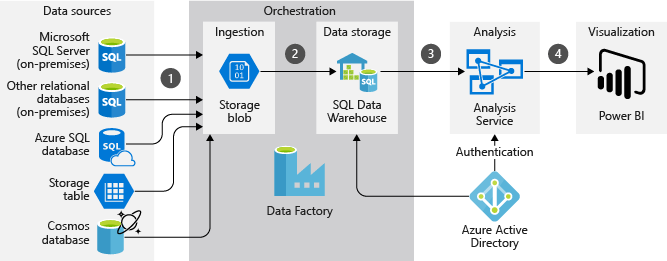
Stacking information:-
Scaling Compute
Prologue to Azure SQL Data Warehouse:-
Azure SQL Data Warehouse is another expansion to the Azure Data Platform. At the point when I originally caught wind of it I wasn’t exactly certain with regards to what precisely it would be. It just so happens, it is social data set for a lot of information base and huge inquiries as an assistance. This is basically what could be compared to the APS (Analytics Platform System) in the cloud. In this tutorial, I will investigate the Azure SQL DW and check out a portion of its vital highlights to figure out what the best use cases would be.
Architecture Symbol for Azure SQL Data Warehouse
Path to add another SQL DW
In the SQL Data Warehouse edge enter the accompanying fields:
Create Data Warehouse edge
1 Database Name Select a name for your DW. This name should be novel for the chose server.
2 Subscription Choose which of your Azure memberships you might want to utilize in the event that you have mutiple.
3 Resource Group Select a current asset bunch or make another one. Assuming you are doing tests, it great 100% of the time to place every one of the assets in a similar asset bunch. That way when you are done, you can just erase the asset gathering, and it will erase everything.
4 Select Source. One of 3 accessible choices.
5 Server If you don’t have a current server, you will actually want to make one here. This can be a similar server you might have utilized already for a SQL DB
6 Collation Just like SQL Server, you should pick the resemblance. Pick cautiously as it can’t be changed after you made the information base.
7 Performance Level This slider is utilized to increase or down the quantity of Data Warehouse Units you might want to utilize. A DWU is an estimation used to work out the register force of an information stockroom.
8 Pricing When you have chosen your DWU’s it will show an expected expense of running your information distribution center each hour.
9 Create Click on make to arrangement your information distribution center. This requires a few minutes.
When the DW has been provisioned you can associate with it utilizing SSMS, recollect that you need to arrange the server firewall to permit access from your customer. In SSMS you will see that the symbol for your DW appears to be unique to that of a normal SQL DB.SQL DW in SSMS
The symbol resembles a lot of data sets together, which is very adept assuming we take a gander at the design.
Design
Azure SQL Data Warehouse utilizes conveyed information and an enormously equal handling (MPP) plan. The capacity is de-coupled from the process and control hubs, and accordingly, it tends to be scaled freely.
Logical engineering plan
SQL DW information is conveyed into 60 appropriations, however it can have at least 1 figure hub, contingent upon the quantity of DWUs that you select. In my SQL DW made above I chose 400 DTU. How about we view what that gives me.
DTU 400 hubs and conveyances
I can see here that I have 4 process hubs, and that every hub has 15 conveyances. You can mess with this, yet basically as the quantity of process hubs change the quantity of conveyances might be re-organized to be similarly appropriated between the register hubs. The dispersions will forever amount to 60. Assuming you picked DWU 6000 you will basically get a 1 to 1 proportion of figure to capacity.
Cooperative appropriation :-
With this dissemination, information is haphazardly appointed to every circulation. It relegates the information pretty uniformly across every one of the 60 conveyances. Cooperative effort is the default circulation. Sometimes, this can bring about less fortunate execution than the hash circulation, since when allotting the columns it doesn’t consider the line content.
Hash circulation
This circulation permits you to pick a section to use as a hashing key. Choosing some unacceptable segment to be utilized for the hashing capacity can bring about unevenly dispersed (information slant). So make certain to choose a section which has a ton of unmistakable qualities preferably at least 60, since the information will be circulated among 60 disseminations.
Use Cases
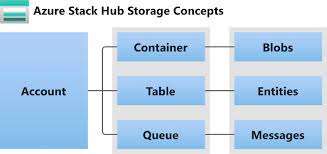
Information stockroom models :-
The accompanying reference designs show start to finish information stockroom structures on Azure:
Different advantages include :-
Challenges :-
Appropriately arranging an information distribution center to fit the requirements of your business can bring a portion of the accompanying difficulties:
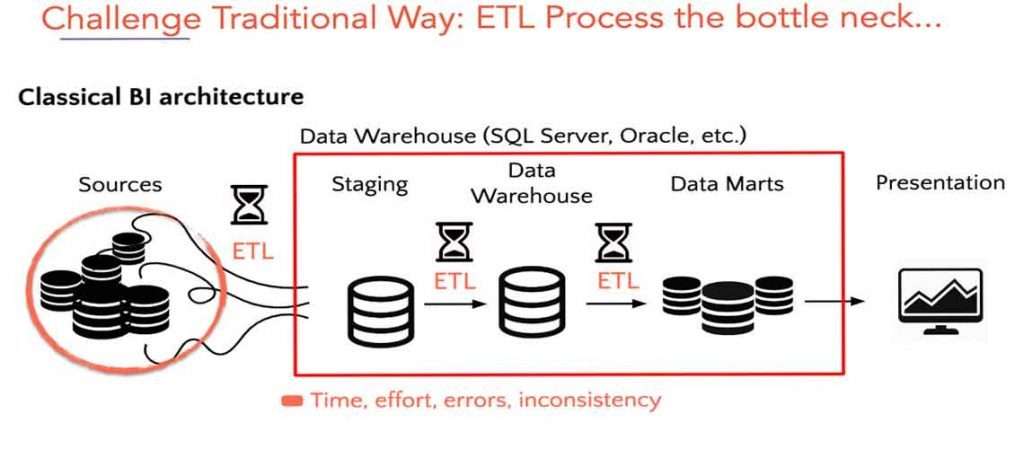
Information warehousing in Azure :-
SMP:
MPP:
MPP frameworks can be scaled out by adding more figure hubs (which have their own CPU, memory, and I/O subsystems). There are actual limits to increasing a server, so, all in all scaling out is more alluring, contingent upon the responsibility. Notwithstanding, the distinctions in questioning, demonstrating, and information apportioning imply that MPP arrangements require an alternate range of abilities.
When choosing which SMP answer for use, see A more critical gander at Azure SQL Database and SQL Server on Azure VMs. Azure Synapse (previously Azure SQL Data Warehouse) can likewise be utilized for little and medium datasets, where the responsibility is figure and memory escalated. Peruse more with regards to Azure Synapse examples and normal situations:
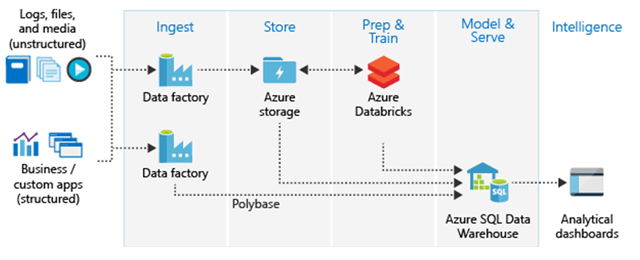
Key choice measures :-
To limit the decisions, start by responding to these inquiries:
In the event that indeed, think about a MPP choice. For a huge Dataal collection, is the Data source organized or unstructured? Unstructured Data might should be handled in a major Data climate like Spark on HDInsight, Azure Databricks, Hive LLAP on HDInsight, or Azure Data Lake Analytics. These can fill in as ELT (Extract, Load, Transform) and ETL (Extract, Transform, Load) motors. They can yield the handled Data into organized Data, making it simpler to stack into Azure Synapse or one of different choices. For organized Data, Azure Synapse has a presentation level called Optimized for Compute, for process concentrated jobs requiring super superior execution.
Would you like to isolate your verifiable Data from your current, functional Data?
Assuming this is the case, select one of the choices where arrangement is required. These are independent distribution centers streamlined for weighty read admittance, and are the most ideal as a different authentic Data store.
Do you have to coordinate Data from a few sources, past your OLTP Data store?
Assuming this is the case, consider choices that effectively incorporate various Data sources.
Do you have a multitenancy prerequisite?
Assuming this is the case, Azure Synapse isn’t great for this prerequisite. For more data, see Azure Synapse Patterns and Anti-Patterns.
Do you incline toward a social Data store?
Assuming this is the case, pick a choice with a social Data store, yet additionally note that you can utilize an instrument like PolyBase to inquiry non-social Data stores if necessary. Assuming you choose to utilize PolyBase, nonetheless, run execution tests against your unstructured Dataal indexes for your responsibility.
Do you have continuous detailing prerequisites?
Assuming you require quick question reaction times on high volumes of singleton embeds, pick a choice that upholds ongoing announcing.
Do you have to help countless simultaneous clients and associations?
The capacity to help various simultaneous clients/associations relies upon a few variables.
Azure Synapse has limits:
Azure SQL Data Warehouse is a completely made due, versatile Data distribution center as-a-administration for handling venture responsibilities. It is intended to effectively increase in no time and develop to address business issues. Azure SQL Data Warehouse is a necessary part of Microsoft’s Cortana Intelligence Suite – a set-up of administrations for huge Data stockpiling and progressed investigation. The design behind Azure SQL Data Warehouse adopts a gap and overcome strategy for huge circulated datasets. Azure SQL Data Warehouse figure assets can be stopped and continued on-request to take out costs during non-business hours. Natural devices (like Visual Studio, SQL Server Management Studio, Power BI, and other Azure administrations) effectively coordinate with Azure SQL Data Warehouse.
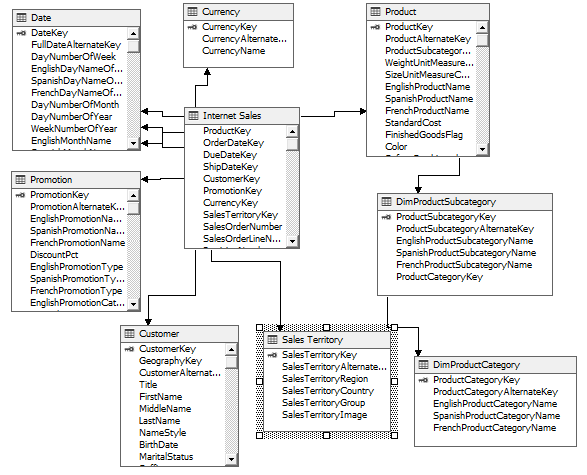
Revealing from an Data stockroom offloads questions from conditional frameworks. Inquiries executed in an Data distribution center go across huge scopes of Data and regularly return huge Dataal collections. This varies from customary Data bases where little exchanges handle embeds, refreshes, erases and chooses.
An Data stockroom responsibility can comprise of:
Also Exporting Data
Verifiable Data can be broke down to show patterns in business tasks or to work with arranging and guaging.
Azure SQL Data Warehouse Architecture
Before we think about the design of the Azure SQL Data Warehouse, we should investigate the engineering of a commonplace data set server, like SQL Server.
Conclusion :-
SQL Servers are executions of symmetric multiprocessing (SMP). Each SMP framework has various CPUs to finish individual cycles all the while. All CPUs share similar assets of memory, circles, and organization regulators.






